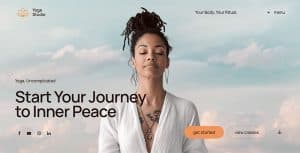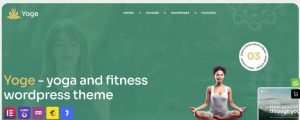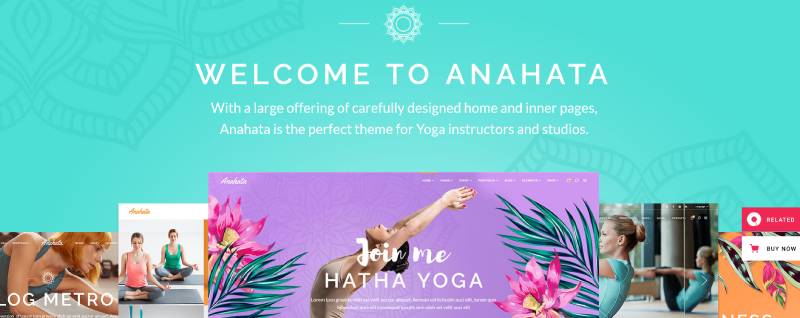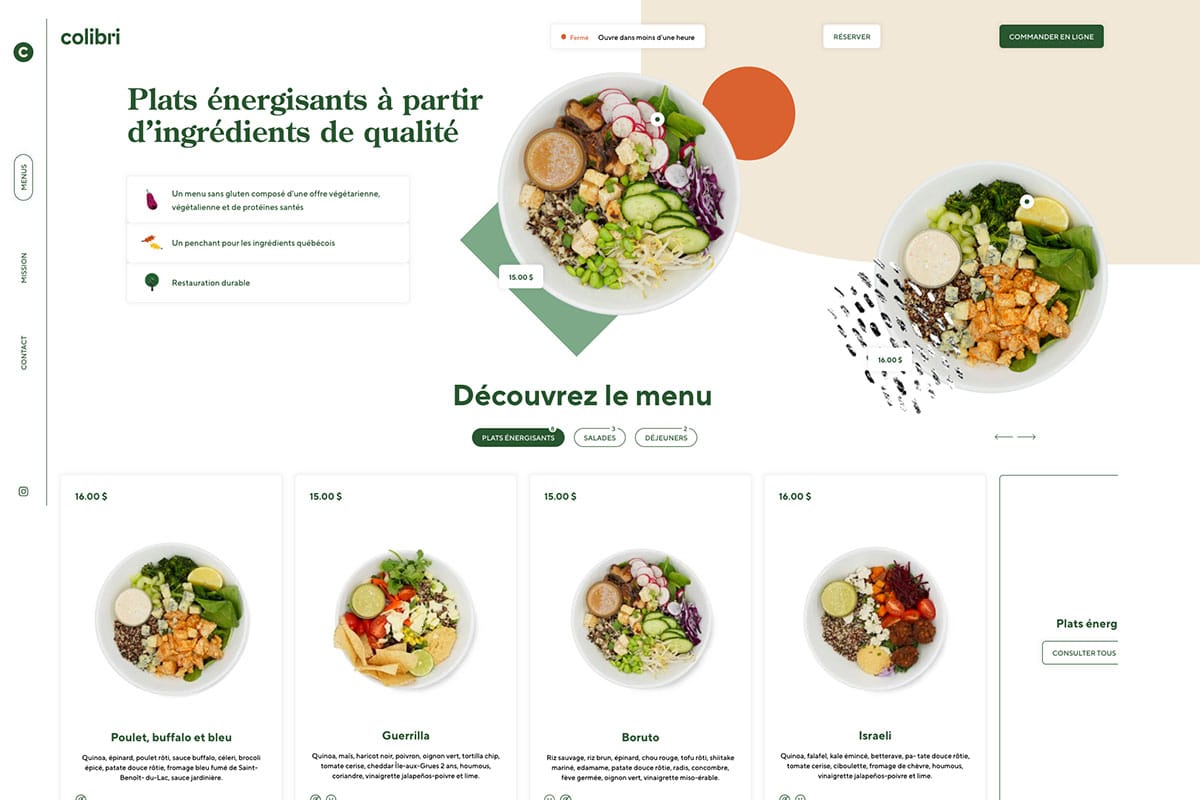Yoga Website Layout Ideas for a Calm, Zen-Like User Experience
Creating a yoga website is more than building a digital presence—it’s about setting a tone that mirrors the serenity and mindfulness you bring to your teaching. When someone visits your website, they should feel a sense of calm the moment the page loads. The right layout can instantly communicate your philosophy, attract students, and encourage them to book a class or explore your offerings.
In this guide, we’ll walk through expert-backed yoga website layout ideas for a calm, Zen-like user experience, along with practical steps you can follow even if you’re not a designer. Whether you’re building a yoga site from scratch or refreshing your current one, these tips will help you create a space that feels peaceful, intuitive, and deeply aligned with your practice.
🌿 Why Zen-Like Design Matters for Yoga Websites
Design isn’t just aesthetics—it influences emotion, behavior, and trust. A cluttered, overly bright, or confusing layout can distract or overwhelm visitors, while a calm and harmonious layout encourages users to slow down, breathe, and stay longer.
A Zen-like yoga website layout typically includes:
-
Clean, spacious page structure
-
Soft colors and natural textures
-
Simple navigation
-
Mindful use of visuals
-
Clear calls-to-action that don’t feel pushy
When done well, your website becomes an extension of your studio environment—a sanctuary users can step into anytime.
🌱 Step-by-Step: Yoga Website Layout Ideas for a Calm, Zen-Like User Experience
Below is a detailed, friendly walkthrough of the most effective layout strategies to infuse peace and clarity into your website.
Step 1: Start with a Minimalist, Spacious Layout
Minimalism is at the heart of Zen-like design. The more spacious and uncluttered your layout, the more relaxed visitors will feel.
Tips:
-
Use plenty of white space around elements.
-
Limit each section to one core idea (e.g., “About,” “Classes,” “Testimonials”).
-
Avoid long, dense paragraphs; use short paragraphs and breathing room.
-
Choose a simple grid layout—often a single column or two-column style works best.
Why it works:
Space allows the eyes (and mind) to rest. Minimalist layouts also improve clarity and help highlight what’s important, such as your class schedule or your personal story.
Step 2: Choose a Calm, Nature-Inspired Color Palette
Colors influence mood instantly. For a yoga website, soft, grounded tones create calm and convey balance.
Consider colors like:
-
Sage green
-
Sand beige
-
Soft lavender
-
Warm greys
-
Misty blues
-
Earthy neutrals
Avoid extremely bright or high-contrast colors. They create tension and make the site feel busy.
Pro Tip:
Use one primary color (e.g., soft green), one accent color (e.g., gold or beige), and lots of neutral space. This keeps the design harmonious and visually consistent.

Step 3: Incorporate High-Quality, Peaceful Imagery
Photos are among the strongest emotional triggers on a website. Use images that feel natural, grounded, and real.
Ideal image types:
-
Nature backgrounds (forest, sea, sunrise)
-
Calm yoga poses
-
Studio shots with natural light
-
Close-up details like hands in mudra, candles, or natural textures
-
Minimalist lifestyle scenes
Avoid:
-
Busy backgrounds
-
Low-resolution photos
-
Overly staged or corporate-looking stock images
If possible, use your own photos to create authenticity.
To maintain the calm feel, avoid visual overload. Limit images to essential areas like hero banners, section dividers, or class previews.
Step 4: Use Gentle Typography That Supports Relaxation
Typography is often overlooked, but it plays a huge role in your website’s personality.
Best font choices for yoga websites:
-
Light sans-serif fonts (e.g., Lato, Raleway, Montserrat Light)
-
Soft serif fonts for headings (e.g., Playfair Display, Cormorant Garamond)
-
Handwritten accents sparingly (e.g., for quotes or section headings)
Tips:
-
Avoid heavy, bold fonts except in small doses.
-
Increase line spacing for easy reading.
-
Use clear visual hierarchy (e.g., large heading → medium subheading → body text).
A gentle typographic rhythm makes reading feel effortless—exactly what visitors need when exploring yoga content.
Step 5: Simplify Your Navigation for Effortless Movement
A calm user experience means visitors should never feel lost or overwhelmed.
Keep your top navigation limited to 4–6 items, such as:
-
Home
-
About
-
Classes / Schedule
-
Online Courses
-
Blog
-
Contact
Avoid nesting too many submenus, which creates cognitive load.

Pro Tips:
-
Always include a clear “Book a Class” button.
-
Keep your navigation sticky (visible as users scroll).
-
Use simple, descriptive labels.
The goal is clarity—not creativity—when it comes to navigation.
Step 6: Build a Zen-Inspired Homepage That Flows Naturally
Your homepage is your digital studio lobby. It should gently guide the user from one section to the next.
A calm homepage layout often looks like this:
-
Hero Section:
Soft background, a short headline like “Find Your Breath Again,” and a clear call-to-action. -
About Preview:
A short, friendly intro with a peaceful photo. -
Classes Overview:
Simple cards or a two-column layout. -
Testimonials:
Social proof builds trust without pushing. -
Blog/Resources Preview:
Three calm content tiles for helpful posts. -
Footer with Contact Info:
Minimal and clean.
This flow feels natural and intuitive, gently leading the visitor toward a booking decision.
Step 7: Create a Clean, Easy-to-Read Class Schedule Page
Your class schedule is one of the most visited pages on a yoga website, so layout matters.
Best practices include:
-
A simple weekly grid
-
Plenty of spacing between rows
-
Clear labels for class types
-
A color scheme that matches the overall site
-
Easy access to booking buttons
Avoid complex tables or tiny fonts. Instead, aim for something that feels as inviting as your classes themselves.
Step 8: Add Mindful Micro-Interactions
Small design touches can elevate the user experience while keeping the layout peaceful.
Examples include:
-
Slow, gentle hover effects
-
Smooth scrolling
-
Fade-in animations (very subtle)
-
Calm movement transitions between pages
Think of micro-interactions as “digital breathing”—small touches that make the site feel alive without overwhelming the user.
Step 9: Keep the Copy Calm, Clear, and Conversational
Words are an essential part of your layout. For a Zen-like effect:
-
Use short paragraphs (like this!)
-
Write in a calm, friendly tone
-
Avoid cluttered text blocks
-
Use simple headings to break up content
-
Add inspirational quotes sparingly
Your copy should guide users the same way you guide a yoga class—with presence, clarity, and ease.
Step 10: Optimize for Mobile (Absolutely Essential)
Most people browsing for yoga studios or online yoga classes do so on their phones. A Zen-like experience must also work beautifully on mobile.
Ensure:
-
Buttons are thumb-friendly
-
Text is legible without zooming
-
Images don’t slow down load times
-
Layout stacks naturally in a single column
-
The menu is simple and easy to tap
A peaceful mobile experience makes your site accessible anytime, anywhere.
🌼 Frequently Asked Questions
1. What colors create the most Zen-like experience on a yoga website?
Soft, earthy tones such as sage green, light beige, warm grey, and soft blues help induce calm. These colors mimic nature and promote relaxation.
2. Should I use a lot of images on my yoga website?
Not necessarily. Use fewer, higher-quality images rather than cluttering your layout with many visuals. One strong image per section is often enough.
3. How important is mobile-friendly design for a yoga website?
Very important. Students often browse schedules, book classes, or read blog posts on their phones. A non-optimized mobile layout can cause confusion and drive users away.
4. What’s the best layout for a class schedule page?
A simple, spacious grid with clear labels, readable fonts, and easy access to booking buttons. Avoid dense tables or overly complex filters.
5. Can I use videos on the homepage?
Yes, but keep them subtle—like a softly looping background video of nature or slow movement. Make sure it doesn’t autoplay with sound, as that breaks the calm experience.
🌙 Final Thoughts
Designing a yoga website with a calm, Zen-like user experience isn’t about adding more—it’s about thoughtfully choosing what stays and what goes. By embracing minimalism, selecting soothing colors, using high-quality images, simplifying navigation, and writing warm, inviting copy, your website becomes a digital extension of your teaching style.
A peaceful layout not only makes your site more beautiful—it builds trust, encourages students to explore your offerings, and helps them feel the grounding energy your practice brings.





